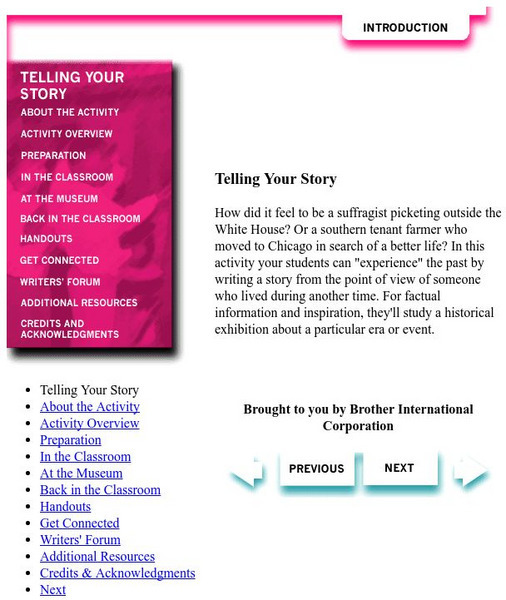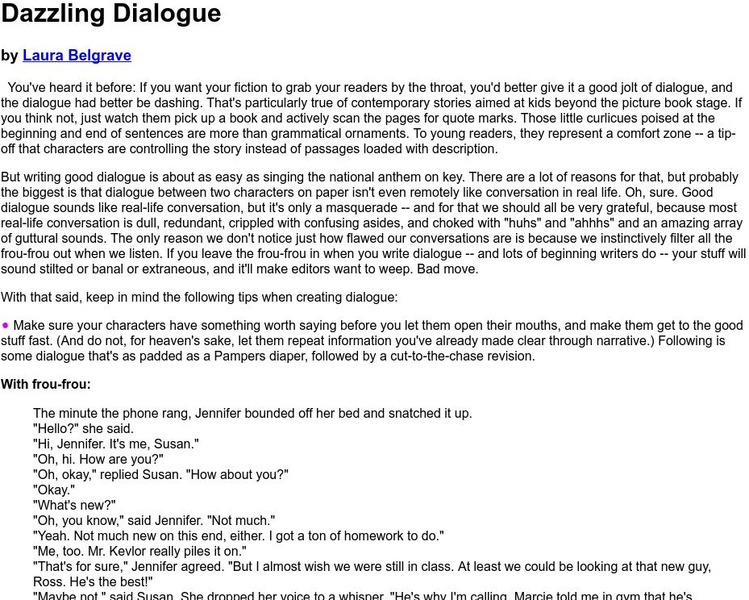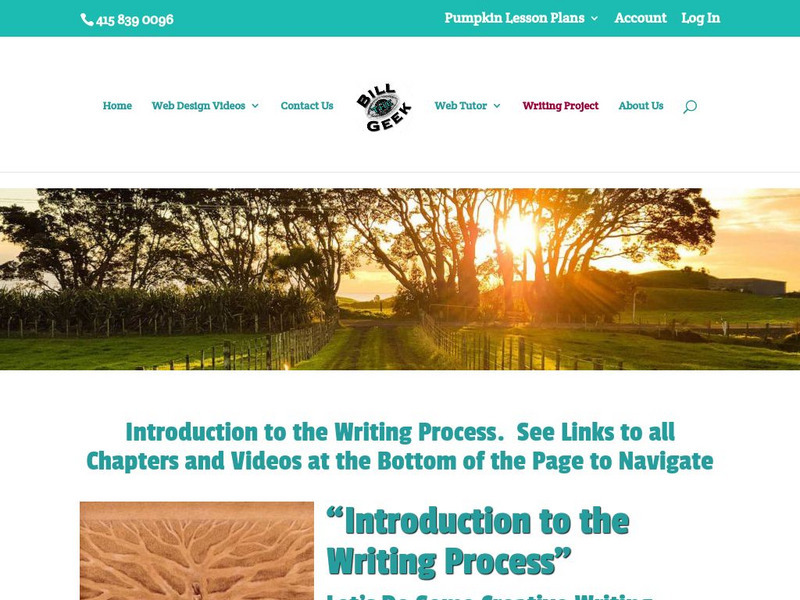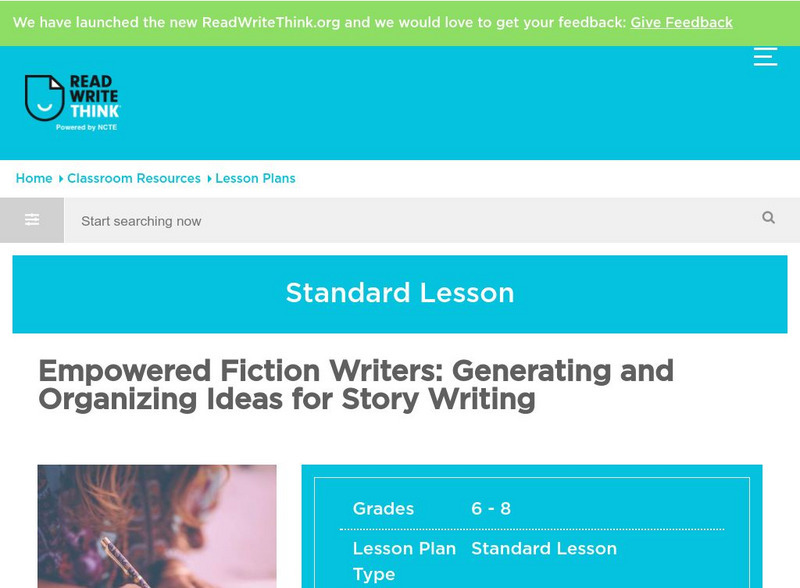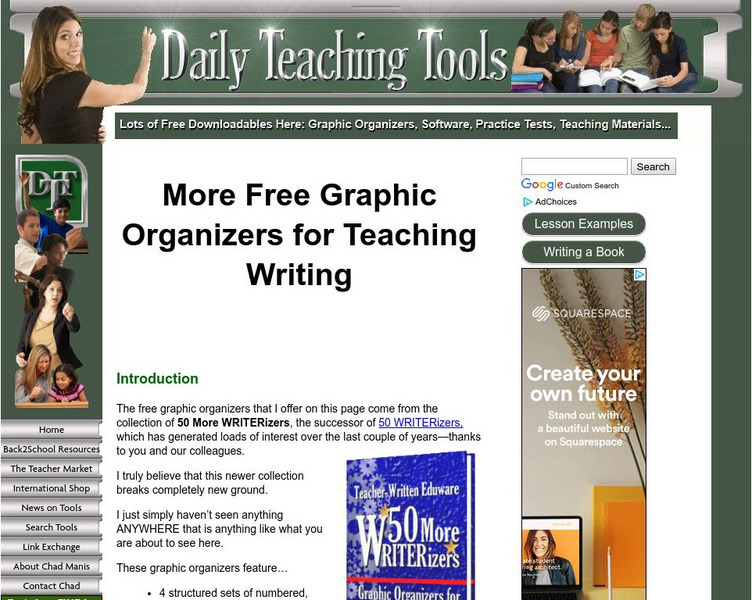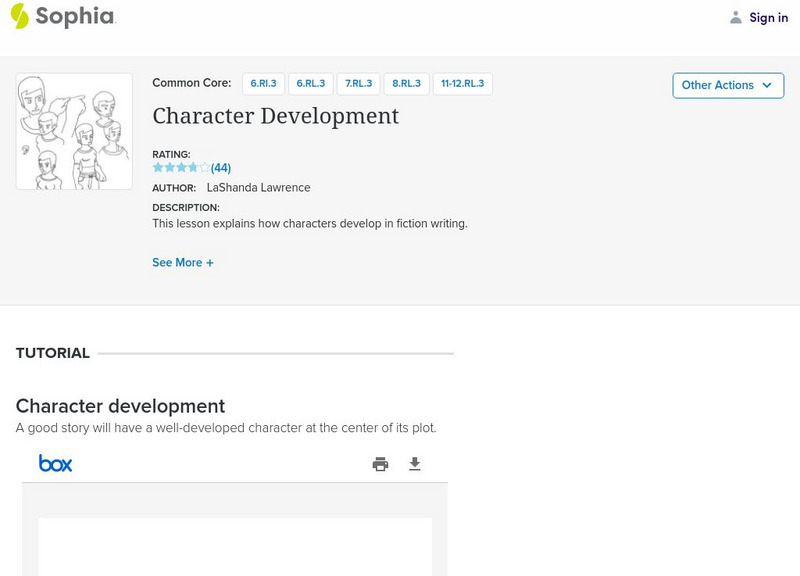Writing Fix
Writing Fix: Fracturing Tales Through Titles
Learners read The Wolf Who Cried Boy by Bob Hartman and then write their own fractured fairy tales using first-person point of view and dialogue. Teacher and student instructions are provided along with student writing samples, an...
Writing Fix
Writing Fix: Dialogue Adventures
In this lesson young scholars will learn how to write dialogue in a particular voice.
Writing Fix
Writing Fix: Action Words Bring Life to Setting Details [Pdf]
Students learn how to develop their ideas through description and action words through a story scavenger hunt. [PDF]
Smithsonian Institution
Smithsonian Education: Telling Your Story
A lesson in which learners gain empathy for people who lived during a historical time period by writing a first-person story with experiences that would have happened during that time.
Harold D. Underdown
The Purple Crayon: Writing Dazzling Dialogue
This site takes you through the process of writing dialogue in fiction, demonstrating when to omit, replace, or modify your original writing. Includes several examples and gives excellent advice for young writers. W.9-10.3b Narrative...
Polk Brothers Foundation Center for Urban Education at DePaul University
De Paul University: Center for Urban Education: Expand Story or History Text Based Dialog[pdf]
Students will use graphic organizers to help them make inferences about historical figures' feeings and motives. Students will summarize the information during an extension activity.
Other
Writing Is Exciting!
Students and teachers can use this site to find detailed information on effective and creative story writing.
ReadWriteThink
Read Write Think: Empowered Fiction Writers: Generating and Organizing Ideas
Do your learners' minds go blank when they confront a blank piece of paper? Speedwriting can help them get started with writing as well as come up with topics to write about. They can then incorporate their key ideas and phrases into a...
ReadWriteThink
Read Write Think: Choose Your Own Adventure: A Hypertext Writing Experience
This series of lessons involves student collaboration, writing and analytical skills, technology and imagination. While the instructional activity suggests use of FrontPage, it would also be possible to use a number of other authoring...
Writing Fix
Writing Fix: Story Starters: Intriguing Titles
In this lesson plan, an interactive link included to help generate ideas for stories. A button is clicked and a topic is given. In a writer's notebook or journal, each student will use the topic given and develop it. [Requires Adobe...
Daily Teaching Tools
Daily Teaching Tools: Project Narration
This Daily Teaching Tools resource provides graphic organizers for narrative writing. Students will be able to prewrite and draft their narrative writings more efficiently by using these tools.
Writing Fix
Writing Fix: A Character's Decalogue
In this lesson, the writer first writes a personal decalogue (a list of ten personal beliefs) about something important to him/her. The writer then creates a decalogue for a fictional character they will invent and envision. The final...
ReadWriteThink
Read Write Think: Character Clash: A Mini Lesson on Paragraphing and Dialogue
Contains plans for a minilesson that teaches about proper dialogue format while writing, specifically paragraphing. In addition to objectives and standards, this instructional plan contains links to sites used in the lessons as well as...
E Reading Worksheets
E Reading Worksheets: Narrative Essay Assignments
A number of narrative essay assignments are provided in this discussion. Assignments are provided to help scaffold the narrative essay writing process.
Sophia Learning
Sophia: Character Development
This lesson explains how characters develop in fiction writing. W.11-12.3d Sensory/precise lang narratives
Other
Write4 kids.com
This site provides a great deal of information on writing children's stories. Contains "Advice, instruction, insider tips, insight and inspiration."
TES Global
Blendspace: Dazzle Me With Dialogue
An eleven-part learning module with links to websites and texts to use while learning how to write and punctuate dialogue.
TES Global
Tes: Prose: Short Stories
[Free Registration/Login Required] In this downloadable learning module, students will write a short story. Students will refer to the grading rubric to help them self-assess their writings. Students will revise and edit
Tom Richey
Slideshare: Introduction to the Elements of Fiction
A slide show with twenty-two slides about story elements. Includes definitions, information, and examples of character terms, setting terms, plot terms, conflict terms, and more
Caro Clarke
Loving Your Characters Too Much
This article is the fifth in a series that is designed to help new authors with their new novels. This lesson focuses on your main character and what happens when that character lacks character flaws.
Caro Clarke
Caro Clarke: What Is Conflict?
This is the sixth in a series of articles designed to help the new writer with their novel. This article focuses on conflict and how it effects the characters and the plot of the story. W.11-12.3a Narratives
Caro Clarke
Not Stopping the Reader: How to Avoid Stumbling Blocks
This is the eighth article in a series that focuses on helping the new novel author. This article looks at how the author can avoid creating stumbling blocks that disrupt the flow of the novel.
Caro Clarke
A, B, and C Characters
This is the ninth article in a series that focuses on helping the new novel author. This article focuses on what the author calls "A, B, and C Characters," used to describe the different levels of characters.
Caro Clarke
Explaining Too Much: Why More Is Less
This is the eleventh article in a series that is designed to help the new novel author. This article focuses on how to eliminate needless information in your novel. The key is to not explain too much about the action.


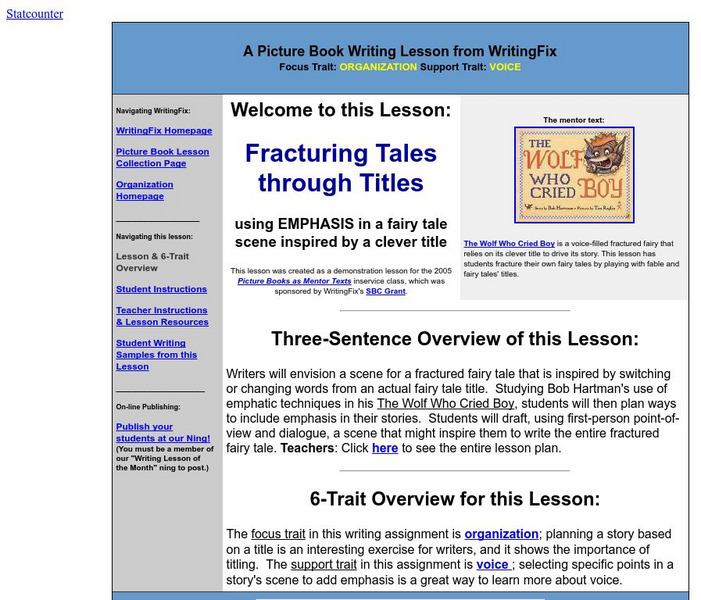
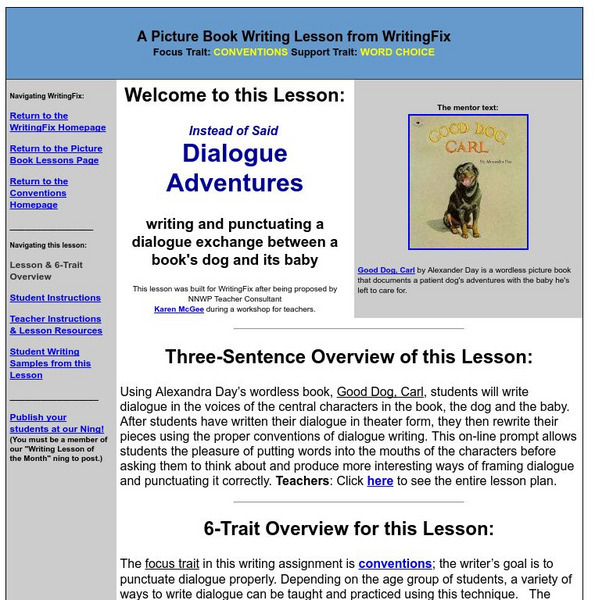
![Writing Fix: Action Words Bring Life to Setting Details [Pdf] Lesson Plan Writing Fix: Action Words Bring Life to Setting Details [Pdf] Lesson Plan](https://d15y2dacu3jp90.cloudfront.net/images/attachment_defaults/resource/large/FPO-knovation.png)
